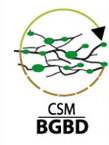The brief highlights work performed under the eight-year project on Conservation and Sustainable Management of Below Ground Biodiversity.
 November 2010: The International Center for Tropical Agriculture (CIAT) has published a brief entitled “The Life in the Earth: Understanding and Using Below-Ground Biodiversity.” The brief highlights work performed under the eight-year project on Conservation and Sustainable Management of Below Ground Biodiversity and the results of the closing conference held in April 2010.
November 2010: The International Center for Tropical Agriculture (CIAT) has published a brief entitled “The Life in the Earth: Understanding and Using Below-Ground Biodiversity.” The brief highlights work performed under the eight-year project on Conservation and Sustainable Management of Below Ground Biodiversity and the results of the closing conference held in April 2010.
The project was executed by CIAT’s Tropical Soil Fertility Research Area. The brief discusses diverse soil organisms including bacteria, fungi, protozoa and invertebrates. It highlights bacteria’s role in recycling nutrients and fungi’s symbiotic role with plants and animals, as well as for a direct source of foods. The brief notes that conversion of forests to agriculture results in loss of below-ground biodiversity, which could lead to the loss of unknown species that could be valuable for economic purposes or carbon sequestration. It says that little attention has been paid to enhancing soil carbon sequestration through sustainable management of below-ground biodiversity.
The project explored approaches to make agricultural systems less dependent on chemical inputs, more sustainable and resilient, and more effective in sequestering carbon. The project developed standard methods for evaluating below-ground biodiversity, inventoried soil organisms at 11 sites and investigated practices for improved management of below-ground biodiversity. The most favorable options included using methods like agroforestry practices, intercropping, crop rotations, and integrated crop-livestock systems. Scientists found that mosaic systems, even some intensive systems, maintain high biodiversity levels.
CIAT is a member of the Consultative Group on International Agricultural Research (CGIAR). [Below Ground Biodiversity Project website]